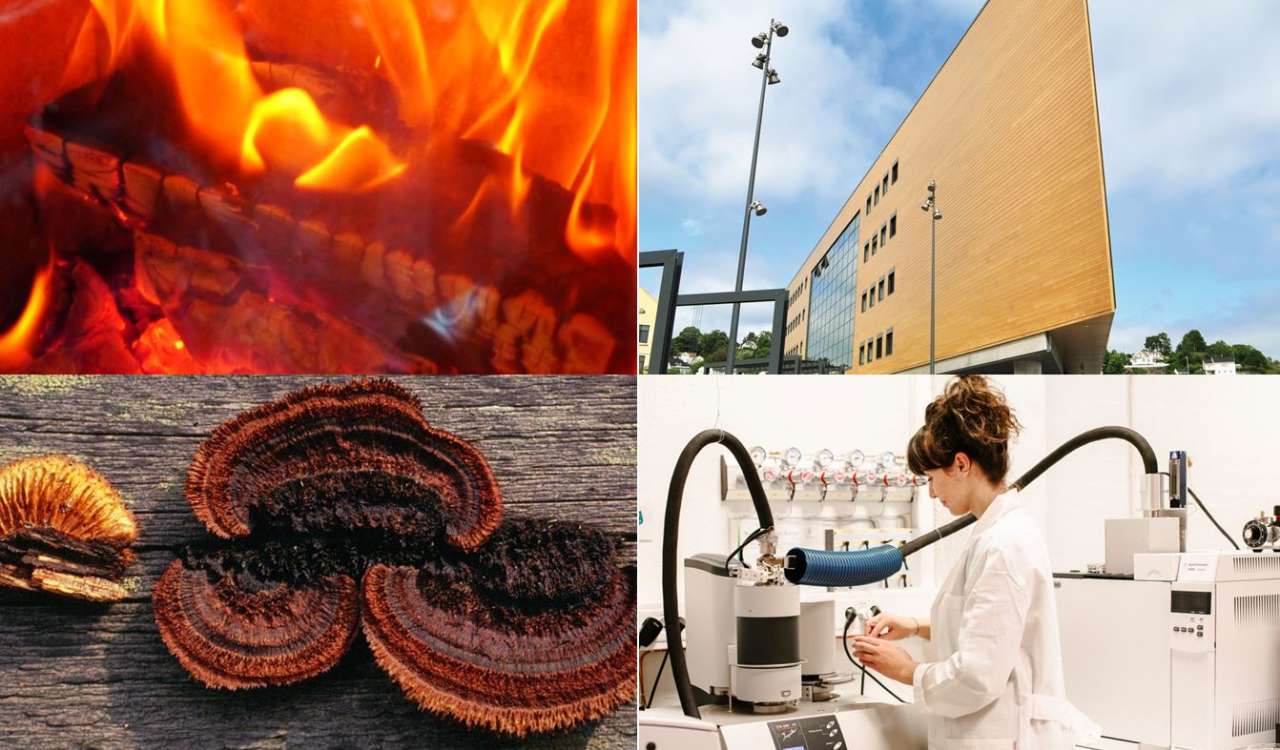
Use of wood
Wood is a versatile material, and wooden products have at all times found a wide variety of applications in our society. Being part of a national research institute, we are engaged in most aspects of wood science and technology.

Wood being a natural material, its characteristics are derived from the growing tree, affected by silviculture and forest site. Our expertise covers the value chain from forest via breakdown or defibration, seasoning and remanufacturing to processed timber products.
Publications
Abstract
Understanding the service life of wood products used outdoors is essential for end-users to set realistic expectations regarding material performance. Furthermore, reliable service life data is critical for assessing building costs, environmental impact, and carbon storage potential. The report compiles existing knowledge on the service life of wood in outdoor constructions in Norway. The relevant applications included are wood used in ground contact, decking, and external cladding, and the data are derived from field trials conducted in Norway. The primary aim is to update the service life tables from a report published in 2014. Additionally, the report provides a brief introduction to the topic of wood protection. Many factors influence the service life of wood products, with temperature and moisture being the two most significant. The service life of wood in constructions primarily depends on the application, the natural durability of the material, any wood preservatives used, the presence of wood-degrading organisms, architecture, and craftsmanship. Poorly designed construction details can act as moisture traps, leading to early fungal damage. Therefore, it is important to address future climate challenges with well-informed solutions for optimal wood use. Secondarily, service life depends on thorough and repeated maintenance.
Authors
Andreas Treu Katrin Zimmer Christian Brischke Erik Larnøy Lone Ross Foued Aloui Simon M. Cragg Per-Otto Flæte Miha Humar Mats Westin Luisa Borges John WilliamsAbstract
Timber structures in marine applications are often exposed to severe degradation conditions caused by mechanical loads and wood-degrading organisms. This paper presents the use of timber in marine environments in Europe from a wood protection perspective. It discusses the use of wood in coastline protection and archeological marine wood, reviews the marine borer taxa in European waters, and gives an overview of potential solutions for protection of timber in marine environments. Information was compiled from the most relevant literature sources with an emphasis on new wood protection methods; the need for research and potential solutions are discussed. Traditionally, timber has been extensively utilized in a variety of marine applications. Although there is a strong need for developing new protection systems for timber in marine applications, the research in this field has been scarce for many years. New attempts to protect timber used in marine environments in Europe have mainly focused on wood modification and the use of mechanical barriers to prevent colonization of marine wood borers. The importance of understanding the mechanisms of settlement, migration, boring, and digestion of the degrading organisms is key for developing effective systems for protecting timber in marine environments.
Abstract
Surface mould growth contributes to the colour changes of outdoor exposed wood over time. Modelling mould growth can thus help visualize wooden facades’ colour development, which can improve facade design and service life. However, existing wood mould models do not consider transient wetting effects that occur outdoors due to precipitation and condensation. To address this, four mould models were evaluated using laboratory experimental data that included exposure to transient wetting. First, the models (the original and the updated VTT model, the biohygrothermal model and the mould resistance design (MRD) model) were evaluated for Scots pine sapwood. For this evaluation, the transient wetting effect was implemented in the models by using hourly wood surface relative humidity (RH), calculated from electrical resistance measurements, as input. This showed that the original and the updated VTT model gave best fit to the experimental data. However, further evaluation of these two models for more wood materials showed that the updated VTT model was sensitive to the choice of material parameters. Large discrepancies occurred when varying the material parameters in the updated VTT model. Finally, different estimates of RH were tested in the original VTT model. Using wood surface RH as input gave best fit to the experimental data, and ambient air RH gave poorest fit. Overall, the results indicate that the original VTT model is fairly reliable and can be used to predict mould growth on wooden claddings exposed to transient wetting as long as the wood surface climate is used as climatic input data.
Abstract
No abstract has been registered
Abstract
No abstract has been registered
Abstract
This paper aimed to investigate the genetic structure (GS) of Scots pine in the northern area of its distribution range by means of seven neutral nuclear microsatellite markers. In particular, the postglacial recolonization of these areas and possible different adaptation patterns in distinct refugia were studied. The GS and diversity were assessed with seven pairs of neutral nuclear microsatellite primers. A high genetic diversity was found in the Scots pine material tested, along with a shallow GS. This pattern is typical for recolonized areas and species with large population sizes, which are connected by pollen-mediated gene flow. A STRUCTURE analysis found two genetic groups to be the most likely, one south-eastern and one north-western group that meet in Fennoscandia. This indicates that Scots pine recolonization of Fennoscandia might have taken place from two different directions (south-west and north-east). Scots pine that recolonized the area originated in at least two different refugia during the last glacial maximum. The glacial survival in distinct refugia can have led to different adaptation patterns and growth optima in the different groups as reflected in the formation of latewood content, where lineage was a significant influencing factor.
Abstract
No abstract has been registered
Authors
Matthew Schwarzkopf Michael Burnard Viacheslav Tverezovskiy Andreas Treu Miha Humar Andreja KutnarAbstract
No abstract has been registered
Authors
Callum Aidan Stephen Hill Andrew Norton Janka DibdiakovaAbstract
More than sixty environmental product declarations of insulation materials (glass wool, mineral wool, expanded polystyrene, extruded polystyrene, polyurethane, foam glass and cellulose) have been examined and the published information for global warming potential (GWP) and for embodied energy (EE) has been analysed and is presented. A peer-review literature survey of the data for GWP and EE associated with the different insulation products is also included. The data for GWP (kg carbon dioxide equivalents) and EE (megajoules) is reported in terms of product mass or as a functional unit (FU) (1 m2 of insulation with R = 1 m2 K/W). Data for some classes of insulation material (such as glass wool) exhibit a relatively narrow range of values when reported in terms of weight of product or as a functional unit. Other classes of insulation material exhibit much wider distributions of values (e.g., expanded polystyrene). When reported per weight of product, the hydrocarbon-based insulation materials exhibit higher GWP and EE values compared to inorganic or cellulosic equivalents. However, when compared on an FU basis this distinction is no longer apparent and some of the cellulosic based materials (obtained by refining of wood chips) show some of the highest EE values. The relationship between the EE and GWP per kg of insulation product has also been determined as being 15.8 MJ per kg CO2 equivalents.
